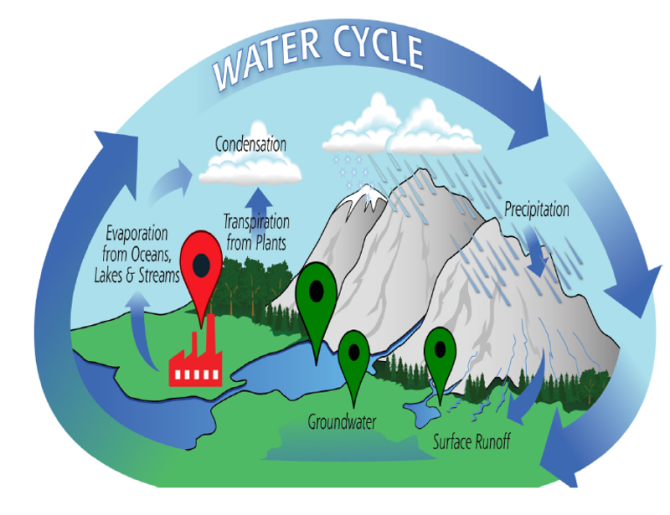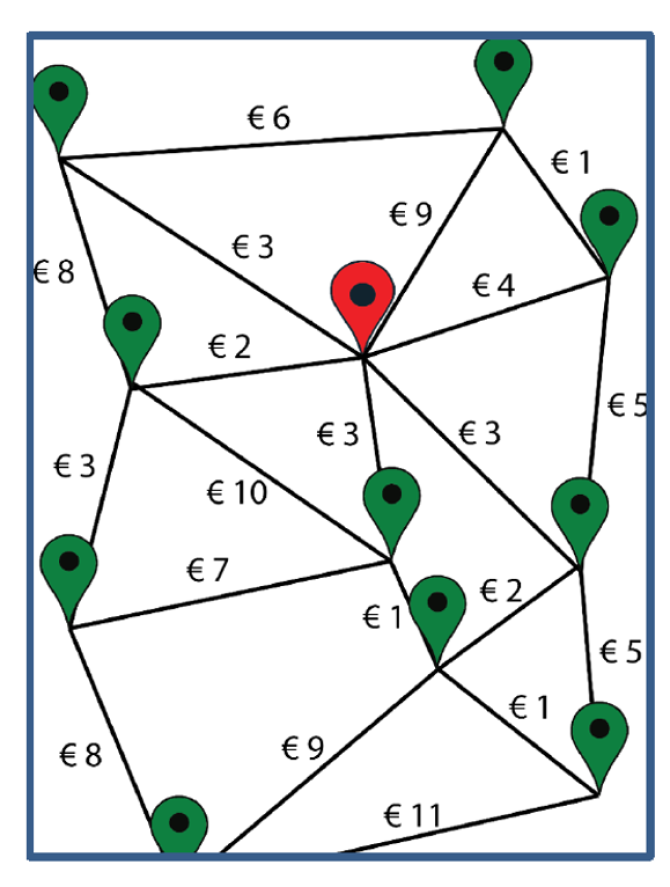
News
Science: Sustainable water useby smart modelling
ETE scientist Joeri Willet is developing a model to better match water supply and demand of the industry. Within two years, he aims to have built a model that is capable of matching water supply and demand by finding alternative local water sources. In addition, the model calculates how to utilize supply sources in a sustainable way.
Willet: ‘We want to enable water users to match their water consumption with the availability in the local environment, as well as with the water availability at any particular moment.’
Climate warming is expected to change future water supply, while alterations in society will change demand. Increased population size as well as intrusion of salt water due to sea level rise, make water supply for consumers and industry more uncertain and unpredictable. ‘Smart use of available water sources and finding alternative sources are essential to prevent future problems related to water availability’, says Willet.With more water users and an increased overall water consumption, it will be necessary to better match water supply and demand. Sustainable use of available water sources, with minimal impact on ecosystems, is an important criterion.’ The size of reservoirs of available water depends on a variety of factors and is best illustrated in the water cycle (fig.1). It describes how water moves between the different reservoirs like lakes, rivers, ground water, salt water (oceans, salty groundwater) and atmospheric water (clouds). Depending on local climatic conditions, water moves between different reservoirs due to precipitation, surface runoff (rivers and streams), evaporation from oceans, transpiration by plants, and condensation. Use of these available water sources needs to be smart, efficient and sustainable in the near future.

Potential mismatches
By modelling water use of chemical company DowDuPont in Terneuzen, Willet aims to get a better understanding of potential mismatches between water use and water availability. At the moment, DowDuPont extracts part of their water from National Park De Biesbosch, while they also utilize and recycle water from the wastewater treatment plant in Terneuzen. The aim of the model is to reduce the company’s dependency on Biesbosch water, and suggest alternative water sources for water extraction that are more sustainable. ‘The problem for companies like DowDuPont is that it is hard to predict if their water demand matches with the current and future supply’, Willet explains. ‘If supply appears to be insufficient, the company has several options: transport water from far away, desalinate salt water, or include an extra cleaning step for their cooling water, so it can be recycled. But these options all result in increased costs.’ Therefore, a model to better balance the regional water availability, by taking into account the local renewable availability of water, is essential to ensure continued operation with minimal environmental impact.
Local ecosystems
Based on the locations and sizes of regional water sources (ground as well as surface water), precipitation, evaporation, and the maximum water
amount that can be extracted without impacting local ecosystems, the model calculates how water demand can be matched in the most efficient way. In addition, costs to transport water from source to user are included. This may result in a complicated maze of possibilities to acquire water from different sources, resulting in different costs (fig. 2).

Based in these factors, the model calculates where water may be sustainably extracted with a maximum efficiency, i.e. minimal costs, while maximizing logistical efficiency and sustainability.
Willet: ‘Within two years the model should be able to help companies to find the best and most sustainable water sources for their water supply by smart use of all possible local water sources.’